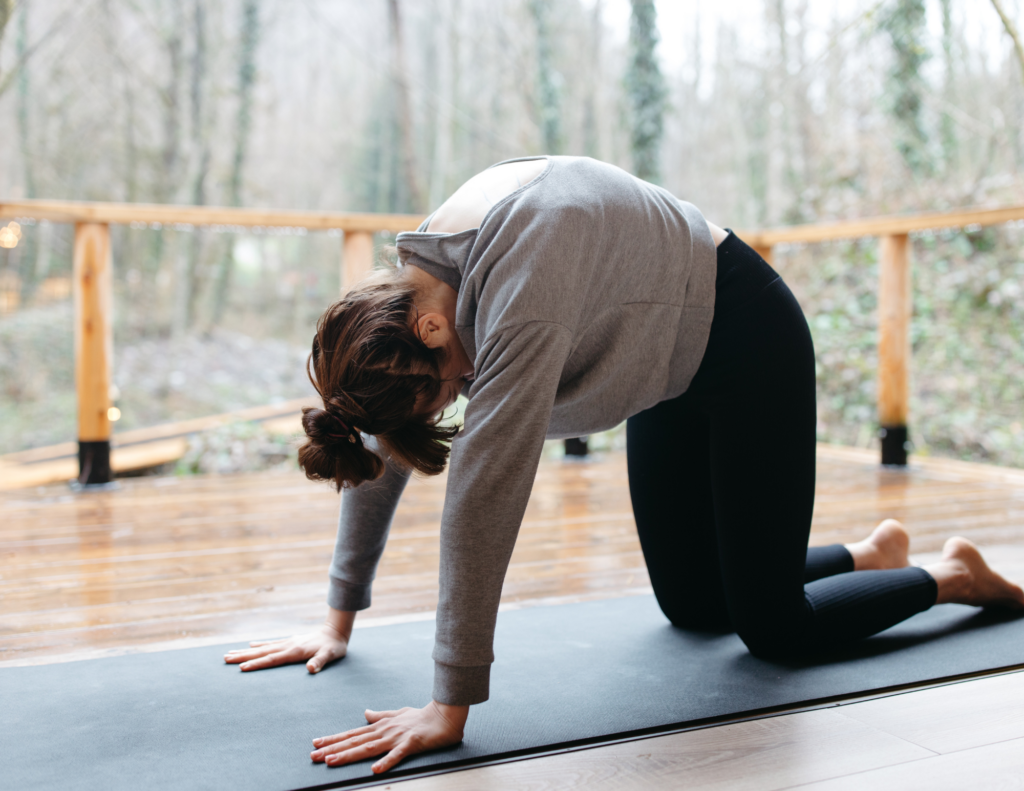Therapeutic Exercise for Personal Injury in Roseville, CA

When personal injuries occur, whether from accidents, sports, or everyday mishaps, the path to recovery can feel uncertain. Pain, reduced mobility, and emotional stress can make it challenging to resume daily activities. Therapeutic Exercise for Personal Injury in Roseville, CA plays a pivotal role in care, offering a scientifically-backed, holistic approach to healing that goes beyond symptom management. By strengthening the body, restoring mobility, and addressing the root causes of dysfunction, Therapeutic Exercise empowers individuals to recover and regain their quality of life.
The Science Behind Therapeutic Exercise
Therapeutic Exercise in Roseville, CA is a specialized form of physical activity prescribed to rehabilitate injuries, improve function, and enhance overall well-being. Unlike general fitness routines, therapeutic exercises are tailored to each individual's needs and injury specifics. They target the following key areas:
- Pain Reduction: Controlled movements and stretches stimulate blood flow to injured tissues, promoting healing and reducing inflammation.
- Mobility Restoration: Gentle exercises prevent stiffness and improve the range of motion in affected joints and muscles.
- Strength and Stability: Specific strengthening exercises help rebuild muscle mass and stabilize joints to prevent future injuries.
- Neuromuscular Coordination: Rehabilitative exercises retrain the nervous system to optimize movement patterns, reducing the risk of re-injury.
ARTICLE CONTINUES BELOW
Schedule a Consultation TODAY!
We would love to sit down with you and chat about your experiences and current pain points.
Types of Therapeutic Exercise for Personal Injury in Roseville
Therapeutic Exercises in Roseville, CA can be broadly categorized based on their purpose and the type of injury they address. Here are the most common types:
Range of Motion (ROM) Exercises
These exercises focus on improving joint mobility and flexibility. They are particularly beneficial after injuries that cause stiffness, such as sprains, fractures, or post-surgical recovery.
- Example: Shoulder pendulum swings for rotator cuff injuries.
Strengthening Exercises
Strengthening exercises target weakened muscles surrounding the injured area. These exercises help rebuild muscle mass, improve joint stability, and support proper posture.
- Example: Resistance band exercises for knee ligament injuries.
Stretching Exercises
Stretching helps alleviate muscle tightness and improves flexibility. It is especially helpful in conditions like whiplash or lower back strains, where muscle spasms are common.
- Example: Hamstring stretches for lower back pain.
Balance and Proprioception Exercises
Injuries can disrupt the body’s balance and proprioception (awareness of body position). These exercises restore coordination and reduce the likelihood of falls or re-injury.
- Example: Standing on one leg for ankle sprains.
Aerobic and Cardiovascular Exercises
Low-impact cardio exercises, like cycling or swimming, help improve overall circulation, aiding in faster recovery and enhanced energy levels.
- Example: Walking on a treadmill for hip or knee injuries.
Functional Training
These exercises mimic real-life movements, such as bending, lifting, or reaching, to prepare the body for daily activities.
- Example: Step-ups for recovering from foot or ankle injuries.
Common Personal Injuries Treated with Therapeutic Exercise
Therapeutic exercise can address a wide range of personal injuries. Here are some of the most common:
Sprains and Strains
Sprains (ligament injuries) and strains (muscle or tendon injuries) are often caused by sudden movements or overuse. Exercises focus on reducing swelling and strengthening the affected area.
Fractures
After the bone heals, therapeutic exercises restore strength and mobility to surrounding muscles and joints, which may have weakened during immobilization.
Whiplash
A common injury in car accidents, whiplash involves neck strain. Exercises improve neck mobility, reduce pain, and restore proper alignment.
Sports Injuries
From ACL tears to rotator cuff injuries, therapeutic exercise is integral to getting athletes back in the game safely.
Post-Surgical Recovery
Therapeutic exercise plays a critical role after surgeries like knee replacements or spinal fusions, helping patients regain strength and mobility.
Benefits of Therapeutic Exercise for Injury Recovery
Therapeutic exercise offers numerous benefits that go beyond physical healing:
Reduces Pain Without Medication
By increasing blood flow and releasing endorphins, therapeutic exercise provides a natural way to manage pain, reducing reliance on painkillers.
Accelerates Healing
Targeted movements stimulate tissue repair, improve circulation, and enhance lymphatic drainage, speeding up the recovery process.
Prevents Scar Tissue Formation
Gentle movements minimize the development of excessive scar tissue, which can otherwise restrict mobility.
Restores Independence
By improving strength and functionality, therapeutic exercise empowers individuals to return to their daily activities and regain their independence.
Prevents Re-Injury
Therapeutic exercise strengthens the injured area and corrects imbalances, significantly reducing the risk of future injuries.
Boosts Mental Health
Engaging in regular exercise releases feel-good chemicals like serotonin and dopamine, helping alleviate anxiety and depression often associated with injury recovery.
How Therapeutic Exercise Is Integrated into Personal Injury Care
At Back On Track 2 Wellness in Roseville, CA, Therapeutic Exercise is a cornerstone of our personal injury care programs. Our approach is rooted in Chiropractic Care, ensuring a holistic and personalized recovery plan. Here’s how we integrate therapeutic exercise:
- Comprehensive Assessment We begin with a thorough evaluation of the injury, including physical exams and diagnostic imaging if necessary. Understanding the root cause and extent of the injury allows us to design a tailored exercise plan.
- Personalized Exercise Plan Each patient receives a customized exercise routine targeting their specific needs. Exercises are adjusted as the patient progresses, ensuring consistent improvement without risk of overexertion.
- Guided Sessions Patients often start with supervised sessions to learn proper techniques and avoid compensatory movements that could worsen the injury.
- Education and Empowerment We educate patients about the importance of therapeutic exercise and provide guidance on performing exercises at home, fostering long-term self-care habits.
- Integration with Other Therapies Therapeutic exercise complements chiropractic adjustments, cryotherapy, and lifestyle modifications to create a comprehensive recovery plan.
Tips for Maximizing the Benefits of Therapeutic Exercise
- Consistency Is Key: Stick to the prescribed routine, even on days when progress feels slow.
- Communicate with Your Provider: Share any concerns or discomfort with your therapist to adjust the exercises as needed.
- Combine with Healthy Habits: Adequate hydration, nutrition, and sleep enhance the body’s healing capacity.
- Set Realistic Goals: Recovery takes time; celebrate small milestones along the way.
The Road Ahead: Long-Term Benefits
Therapeutic exercise not only helps individuals recover from personal injuries but also builds a foundation for long-term health and resilience. By addressing underlying imbalances and strengthening the body, therapeutic exercise reduces the likelihood of chronic pain and future injuries.
Conclusion
Therapeutic exercise is more than just a recovery tool; it’s a pathway to empowerment and resilience. By integrating movement, strength, and mindfulness into the healing process, individuals can overcome injuries and emerge stronger than before. At Back On Track 2 Wellness in Roseville, CA, we are committed to guiding you every step of the way. Whether you’re recovering from a recent injury or managing a chronic condition, our personalized therapeutic exercise programs are designed to help you achieve optimal health and well-being.
If you or a loved one are struggling with a personal injury, contact us today to schedule a consultation. Together, we can get you Back On Track 2 Wellness!
Schedule Your Telehealth Consultation
We would love to sit down with you and chat about your experiences and current health complaints.
The information on this website has not been evaluated by the Food & Drug Administration or any other medical body. We do not aim to diagnose, treat, cure or prevent any illness or disease. Information is shared for educational purposes only. You must consult your doctor before acting on any content on this website, especially if you are pregnant, nursing, taking medication, or have a medical condition.

By Dr. Todd W. Bunning
Dr. Todd W. Bunning’s Chiropractic and Functional Medicine services reach far beyond the local Roseville area, with webcam consultations available for patients in any location. With over 21+ years of Private Practice experience, Dr. Todd continues to focus on the individual: science-based methods to address whole-body health factors.
Dr. Todd’s education didn’t stop when he graduated from Life West Chiropractic College in 2003. Today, he’s continuing to receive training and is chipping away on numerous post-graduate degree programs. This unique blend of clinical health investigation and Lifestyle Medicine application helps people of all ages find the underlying factors that result in chronic disease.